Roof Sheathing: Types, Benefits, and Installation Tips
Wondering what roof sheathing is and why it’s crucial for your roof? Roof sheathing forms the base of your roofing system, providing critical support and durability. In this guide, you’ll learn about different types of roof sheathing, its key benefits, and tips for proper installation.
Key Takeaways
-
Roof sheathing, a crucial structural layer, provides essential support by evenly distributing loads across the roof framework, protecting it from weather elements and enhancing overall insulation.
-
Common materials for roof sheathing include plywood and OSB, offering strength, stability, and cost-effectiveness, with proper installation being crucial for ensuring a durable and resilient roof.
-
Regular maintenance, such as ensuring proper ventilation, insulation, and gutter cleaning, is vital for prolonging the lifespan of roof sheathing and preventing structural damage.
Roof Sheathing: Types, Benefits, and Installation Tips
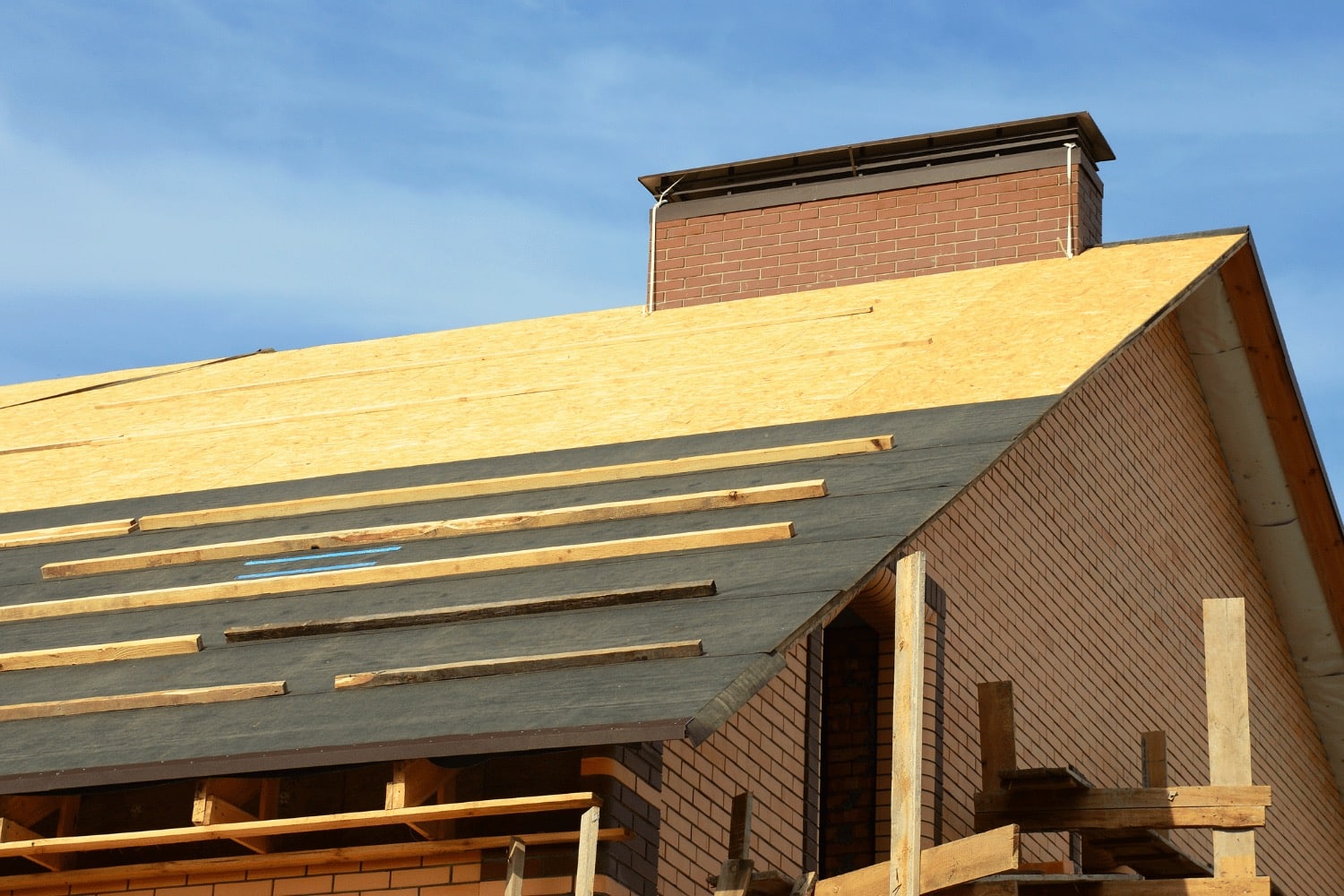
Roof sheathing, also known as roof decking, plays a pivotal role in the overall stability and functionality of your roof. This structural layer lies directly on the rafters or trusses, providing essential support by evenly distributing the load across the framework. Proper sheathing not only acts as a barrier against:
-
rain
-
snow
-
hail
-
wind
Not only does it serve as a barrier against external elements, but insulation also plays a crucial part in helping to regulate temperature and moisture inside the home.
Proper roof sheathing comes with a myriad of benefits. It creates an even surface for installing subsequent roofing materials such as underlayment and asphalt shingles, ensuring a secure and long-lasting roofing system. High-quality sheathing materials contribute significantly to the durability and performance of the roof, extending the lifespan of your shingles and reducing the risk of damage.
Maintaining structural integrity relies heavily on adhering to the recommended fastening schedule during installation. Staggering the seams of adjacent panels enhances the roof’s stability, preventing potential weaknesses. Adhering to these best practices guarantees your roof’s resilience against time and weather conditions.
Introduction
For homeowners, real estate developers, and those involved in building and maintaining structures, it’s vital to grasp the intricacies of roof sheathing. This guide aims to provide a detailed and comprehensive overview of roof sheathing, covering its types, benefits, and installation tips.
Whether you’re planning an entire roof replacement or simply seeking to enhance your knowledge about your old roof, this information will empower you to make informed decisions about your property’s roofing system.
Understanding Roof Sheathing
Also known as roof decking, roof sheathing is a fundamental component of the roofing system. It lies directly on the rafters or trusses, creating a stable platform for attaching roofing materials like shingles or metal panels. This structural layer provides vital support by evenly distributing the load across the roof’s framework, preventing sagging or bowing caused by heavy loads such as precipitation and snow.
Serving as a barrier against harsh weather conditions is one of roof sheathing’s primary functions. It protects your home from rain, snow, hail, and wind, ensuring that the interior remains dry and safe. Additionally, proper sheathing supports insulation, helping to regulate temperature and moisture levels inside the house. This not only enhances energy efficiency but also contributes to the overall comfort of your living space.
The durability and performance of your roof significantly depend on the use of high-quality roofing material. Materials like plywood and OSB (oriented strand board) are commonly used due to their strength and stability. By adhering to the recommended fastening schedule and staggering the seams of adjacent panels, you can enhance the structural integrity of the roof, ensuring it stands the test of time.
Common Materials Used in Roof Sheathing
Plywood and osb roof sheathing are the go-to options for roof sheathing materials. Plywood is made from layers of thin wood veneer glued together at right angles, providing strength and stability. Available in various thicknesses and grades, plywood is versatile and can be used for different roofing applications, offering better resistance to heavy loads.
Another popular choice is Oriented Strand Board (OSB), a wood product made by compressing wood strands with adhesive resins. This process results in a rougher texture compared to plywood, but OSB is favored for its cost-effectiveness, making it an ideal option for budget-conscious projects. Both materials, including wooden boards, provide the necessary support and durability required for a long-lasting roof.
Types of Roof Sheathing

Two main categories define roof sheathing: plank sheathing and sheet sheathing. Plank sheathing, often found in older homes, involves using long, straight wooden planks. This method was common before the invention of plywood and provided a strong and durable base for both floor and roof framing,.
In contrast, sheet sheathing, typically made from plywood or OSB, is preferred in modern construction due to its strength and ease of installation. These materials offer uniform strength and stability, making them ideal for new builds and roof replacements. Let’s explore these types in more detail.
Plank Sheathing
Plank sheathing involves using wooden planks, usually 1×6” or 1×8” boards, to create the roof deck. Historically, this method was the primary choice before plywood became widely available, providing a sturdy and reliable base for roofing materials. Old growth lumber used in historic plank sheathing had a tighter grain structure and was generally stronger than modern harvested wood, making it particularly durable.
This type of sheathing is still used in older or custom-built homes, preserving the traditional aesthetic and structural integrity. Plank sheathing can also include open or skip sheathing, where there are gaps between the boards, often used for roofing materials that require ventilation.
Sheet Sheathing
Sheet sheathing, made from plywood or OSB, has been widely used since the mid-1970s for its strength and durability. OSB, in particular, became popular in the late 1980s due to its affordability and ease of use. These materials provide a flat, even surface for roofing materials, ensuring a secure and stable roof structure,.
Sheet sheathing is available in various thicknesses, such as:
-
⅜”
-
½”
-
⅝”
-
¾”
The thickness is determined by the rafter span. OSB panels, in particular, are lightweight and easy to handle, simplifying the installation process. The resins and waxes used in OSB enhance its resistance to moisture, preventing warping or rotting, making it a reliable choice for modern roofing projects.
Benefits of Proper Roof Sheathing
Several benefits come along with high-quality roof sheathing, contributing to your roof’s overall durability and performance. Investing in robust sheathing materials ensures that your roof can:
-
Withstand harsh weather conditions
-
Provide a solid foundation for roofing materials like shingles or metal panels
-
Offer a stable platform
-
Extend the lifespan of your shingles, reducing the risk of damage.
Effective roof sheathing:
-
Acts as an additional barrier against rain, snow, and wind, protecting your home from potential water damage
-
Prevents air leaks, improving insulation, increasing energy efficiency, and reducing heating and cooling costs
-
Helps maintain a consistent indoor temperature, enhancing the comfort of your living space.
Additionally, a well-installed sheathing platform is essential for securely fastening roofing materials. This stability ensures that shingles or metal panels remain in place, even during severe weather conditions. By providing these benefits, proper roof sheathing plays a crucial role in the longevity and reliability of your roofing system.
How to Identify and Replace Damaged Roof Sheathing
Maintaining the integrity of your roof heavily relies on the ability to identify damaged roof sheathing. Common signs of damage include noticeable roof leaks, sagging ceilings, and waterlogged materials,. If left unaddressed, these issues can lead to more significant structural problems and costly repairs. A sagging ceiling, in particular, indicates major problems with the sheathing and requires immediate attention.
When damage is identified, it’s essential to assess the extent of the problem. Patching roof sheathing can be a cost-effective solution if the damage is caught early. However, extensive damage, such as rotted wood in multiple areas, necessitates complete repair or replacement of the sheathing. Engaging experienced roofing contractors is advisable, as they can identify unseen structural dangers and ensure proper replacement techniques are used.
Cost Considerations for Roof Sheathing Replacement
Replacing roof sheathing involves several cost considerations, including materials, labor, and the size of the roof. Roofing plywood costs between $0.50 to $2.00 per square foot, with prices varying based on quality and thickness. Plywood sheets can range from $9 to $83 per sheet, depending on the specifications.
Labor costs for installing roof sheathing typically range from $1.50 to $3.00 per square foot, with contractors generally charging $45 to $75 per hour,. The total cost for roof decking replacement can vary significantly, ranging from $2,400 to $8,600, depending on factors like the size and pitch of the roof.
For a 1,000 square foot roof, the cost to replace decking is between $2,000 and $5,000.
Importance of Professional Installation
To ensure compliance with local building code and achieve optimal performance, professional installation of roof sheathing is a must. Licensed roofing contractors handle the permitting process and adhere to code requirements, which can vary by location. Proper nail spacing and placement are essential for securing the sheathing to the roof structure, preventing potential weaknesses.
Experienced roofers possess the skills to:
-
Optimize material use and reduce wastage, ensuring a cost-effective installation
-
Fortify the roof with special sealants and ring-shank nails to resist wind uplift in regions prone to severe weather
-
Minimize the risk of falls and injuries, as roofing is a high-risk activity
Professional installation is recommended for these reasons.
Warranties on labor and access to higher-grade, heavier material further underscore the importance of hiring expert roofing contractors.
Maintenance Tips for Long-Lasting Roof Sheathing
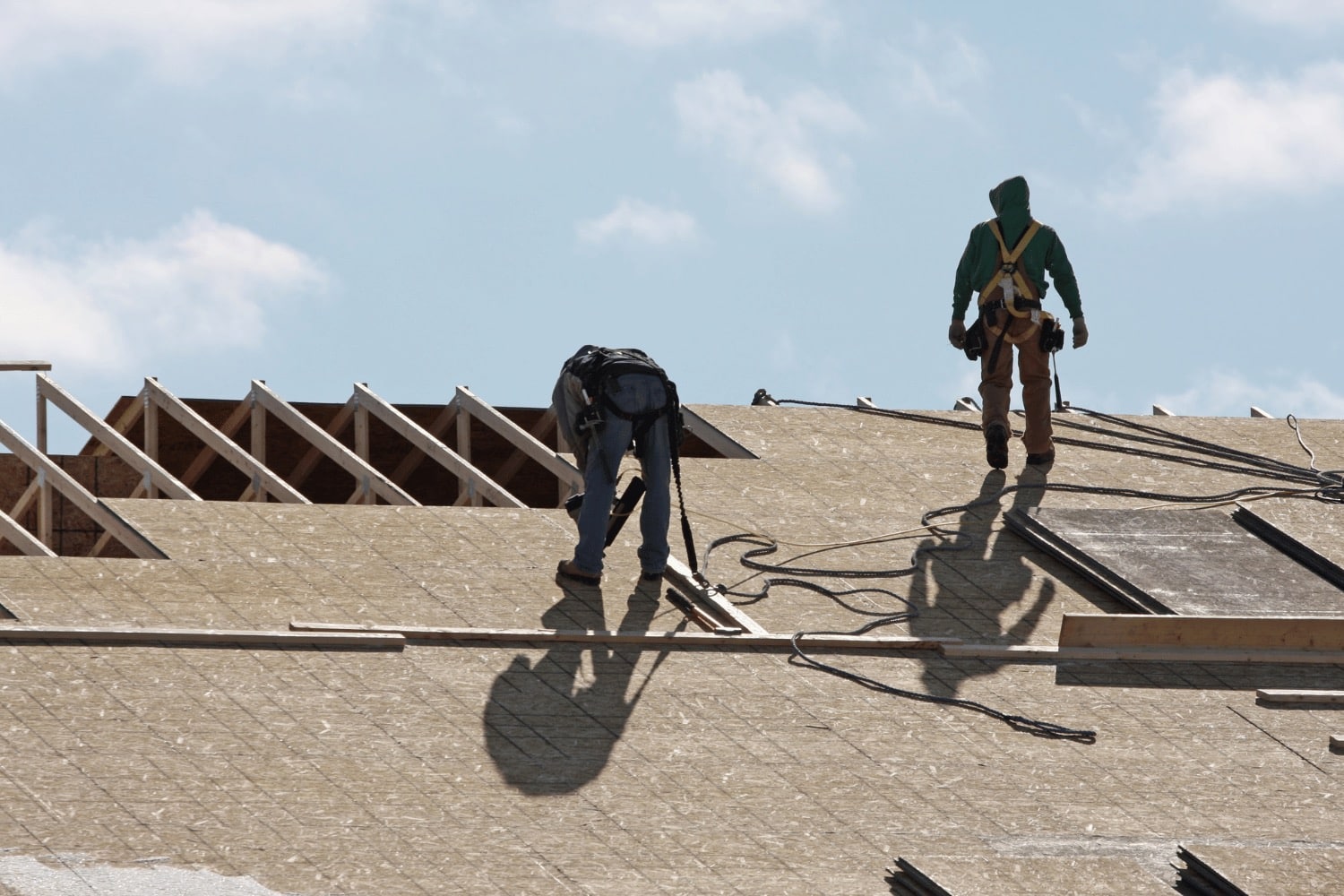
Prolonging the lifespan of your roof sheathing hinges on regular maintenance. Adequate roof and attic ventilation are essential to prevent moisture buildup, which can lead to sheathing damage. Properly insulating attics and cathedral ceilings helps prevent ice dams and costly leaks, ensuring the sheathing remains intact.
Cleaning gutters regularly is crucial to avoid water accumulation that can seep into the roof and damage the sheathing. Additionally, avoid power-washing shingles as the concentrated spray can damage the granules on the roof’s top coating, leading to potential sheathing issues.
By following these maintenance tips, you can ensure the durability and longevity of your roof sheathing.
Summary
In summary, roof sheathing is an integral part of the roofing system, providing structural support, weather protection, and insulation benefits. Understanding the types of sheathing, such as plank and sheet sheathing, helps homeowners make informed decisions about their roofing needs. Proper installation and maintenance are crucial for ensuring the longevity and performance of the roof.
Investing in high-quality materials and professional installation can save you from costly repairs and extend the lifespan of your roofing system. Regular maintenance practices, such as proper ventilation and gutter cleaning, further ensure the durability of your roof sheathing. Armed with this knowledge, you can confidently manage your roofing projects and maintain a safe, comfortable home.
Frequently Asked Questions
What is roof sheathing?
Roof sheathing, also known as roof decking, is a structural layer that provides support and creates a base for roofing materials like shingles or metal panels. It lies directly on rafters or trusses.
What are the common materials used for roof sheathing?
The most common materials used for roof sheathing are plywood and OSB, with plywood made from glued layers of wood veneer and OSB created by compressing wood strands with adhesive resins.
How can I identify damaged roof sheathing?
You can identify damaged roof sheathing by looking for signs such as roof leaks, sagging ceilings, and waterlogged materials. If you notice these indicators, the sheathing may need to be replaced.
What are the cost considerations for replacing roof sheathing?
The cost of replacing roof sheathing depends on the materials and labor. It can range from $2,400 to $8,600, considering plywood sheets ranging from $9 to $83 per sheet. Additionally, labor costs can range from $1.50 to $3.00 per square foot.
Why is professional installation important for roof sheathing?
Professional installation for roof sheathing is important because it ensures compliance with local building codes, proper nail spacing, and placement, as well as fortifying the roof to resist severe weather conditions.
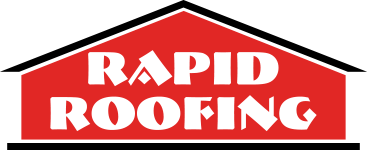
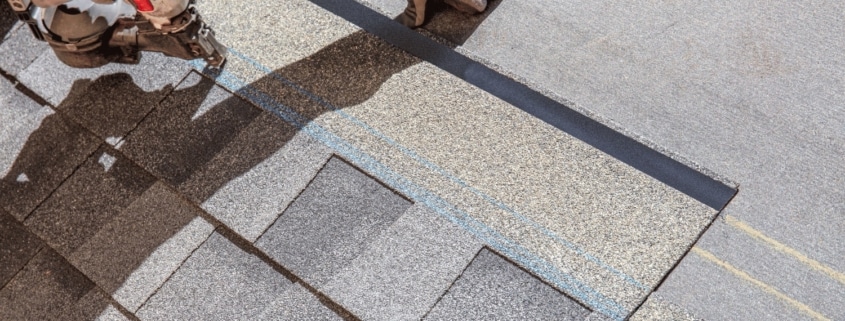
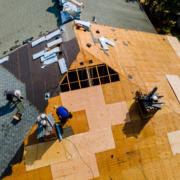
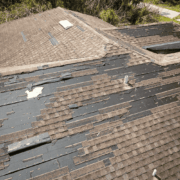
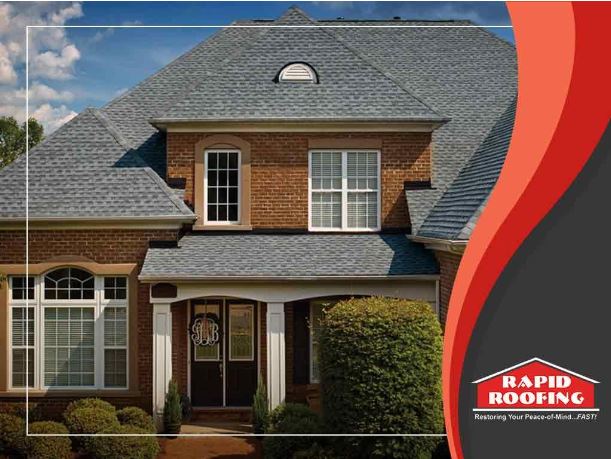
 Residential Roofing
Residential Roofing Storm Damage
Storm Damage Multi-Family Homes
Multi-Family Homes
